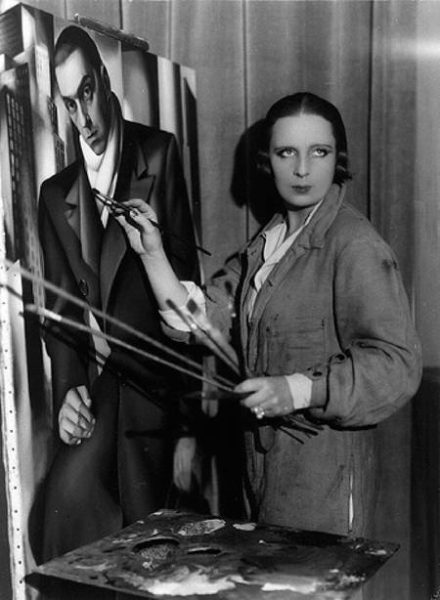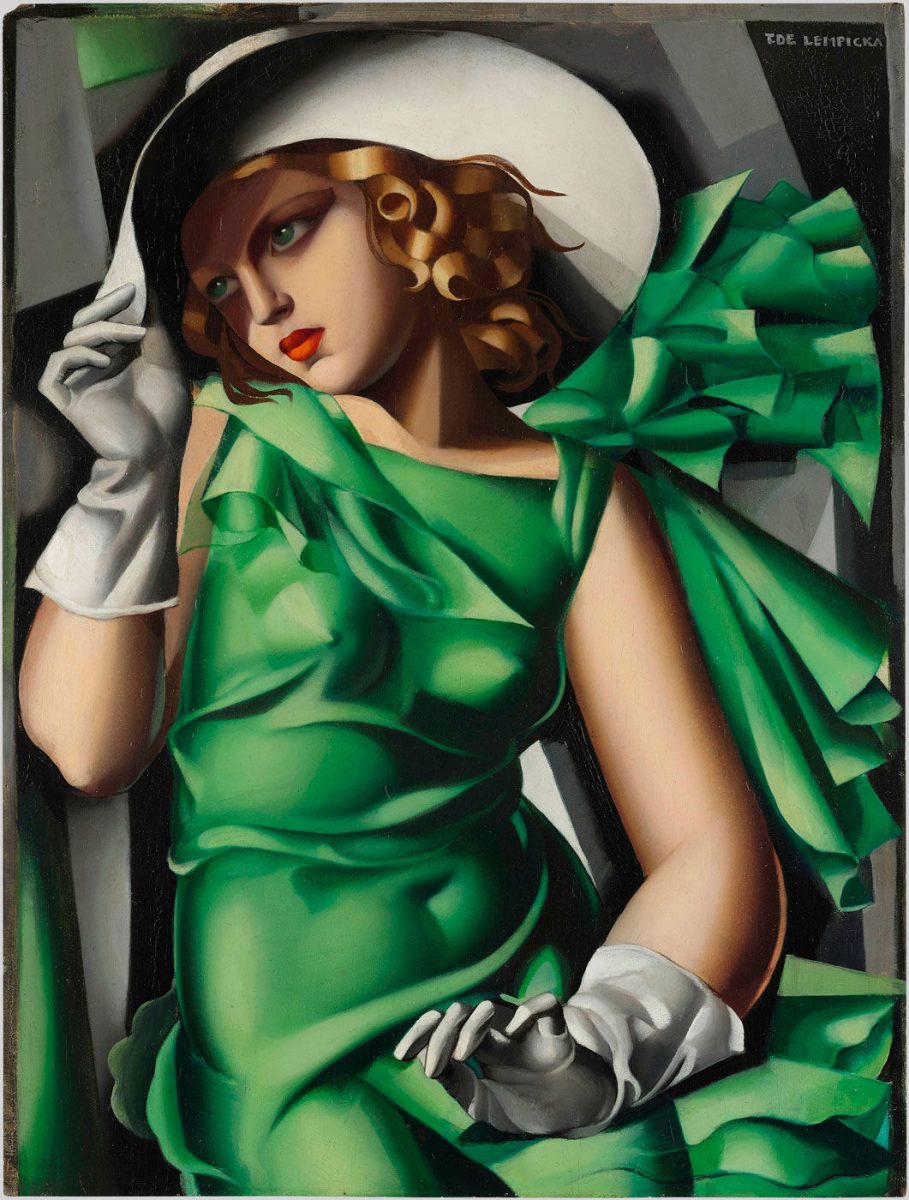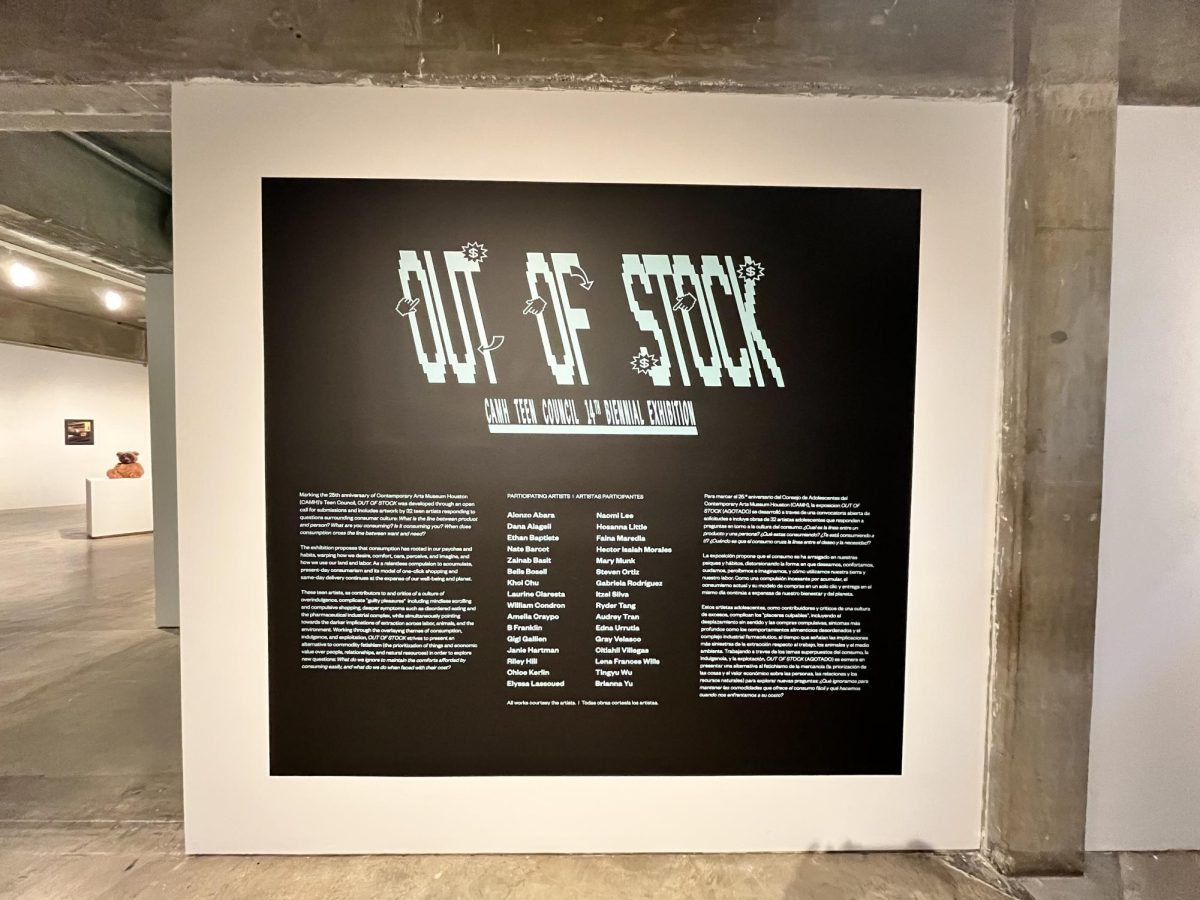Inside the Museum of Fine Arts in Houston, a young woman gazes outward, posed in a vibrant green dress and crisp white gloves. Tamara de Lempicka’s 1930 painting, “Young Girl with Gloves,” is a sophisticated and sensual symbol of the Art Deco movement she helped to define. Beyond its striking geometric style and delicate detail, the painting tells a deeper story of reinvention, rebellion and a world-changing point in time.
As visitors walk through the gallery of de Lempicka’s works, they will enter a world full of glamour and complexity. Born “Maria Górska” in 1898 to a wealthy Polish family, Lempicka transformed herself into an icon of 1920s Paris. Her rise to fame was far from straightforward. Fleeing political turmoil from the Russian Revolution and the looming threats of World War II, she adapted to each journey with the magic of her paint brush, painting bold portraits of café society elites, avant-garde creatives and Hollywood stars.
The exhibition, which contains over 90 works, is a representation of these transformative phases in her life. From classic portraits to still lifes, the evolution of her style over time unfolds before visitors. Additionally, the museum pairs her works with period costumes, Art Deco furniture and vintage photographs to truly immerse viewers in the era and its luxuriousness.
Such splendor has attracted modern icons like Barbara Streisand, Madonna and Elton John, who collect Lempicka’s work for its daunting mix of Cubist precision and Renaissance influences.
Yet, beneath the vibrant surfaces lies the shadow of a woman who concealed her Jewish ancestry and was forced to evade persecution in Europe. Her provocative lifestyle, which included numerous lovers and an unapologetic embrace of her bisexuality, reflected her determination to live authentically. She painted with the same vigor, celebrating the strength and independence of her female subjects.

In “Young Girl with Gloves,” these tensions combine. The subject’s curves are subtly revealed through the dress’s fluidity, showing Lempicka’s ability to capture sensuality without losing the elegance. Painted in oil on plywood, the work combines Cubist-inspired geometry with Renaissance grace, illustrating Lempicka’s unique position between historical traditions and modern innovation.
The artist’s career took a quieter turn in the 1950s as she retreated from the public eye, and eventually made Houston her second home. Decades later, her legacy experienced a revival following a 1972 exhibition in Paris, solidifying her role as a defining voice of Art Deco.
Back at the Museum of Fine Arts, visitors linger by the painting, drawn to its timeless allure. “Young Girl with Gloves” serves as de Lempicka’s invitation for them to see the world through her fearless and kaleidoscopic lens.
Through this perspective, her message of self reliance and independence become clear, and it leaves viewers with a sense of heartfelt softness that stays long after they leave.








